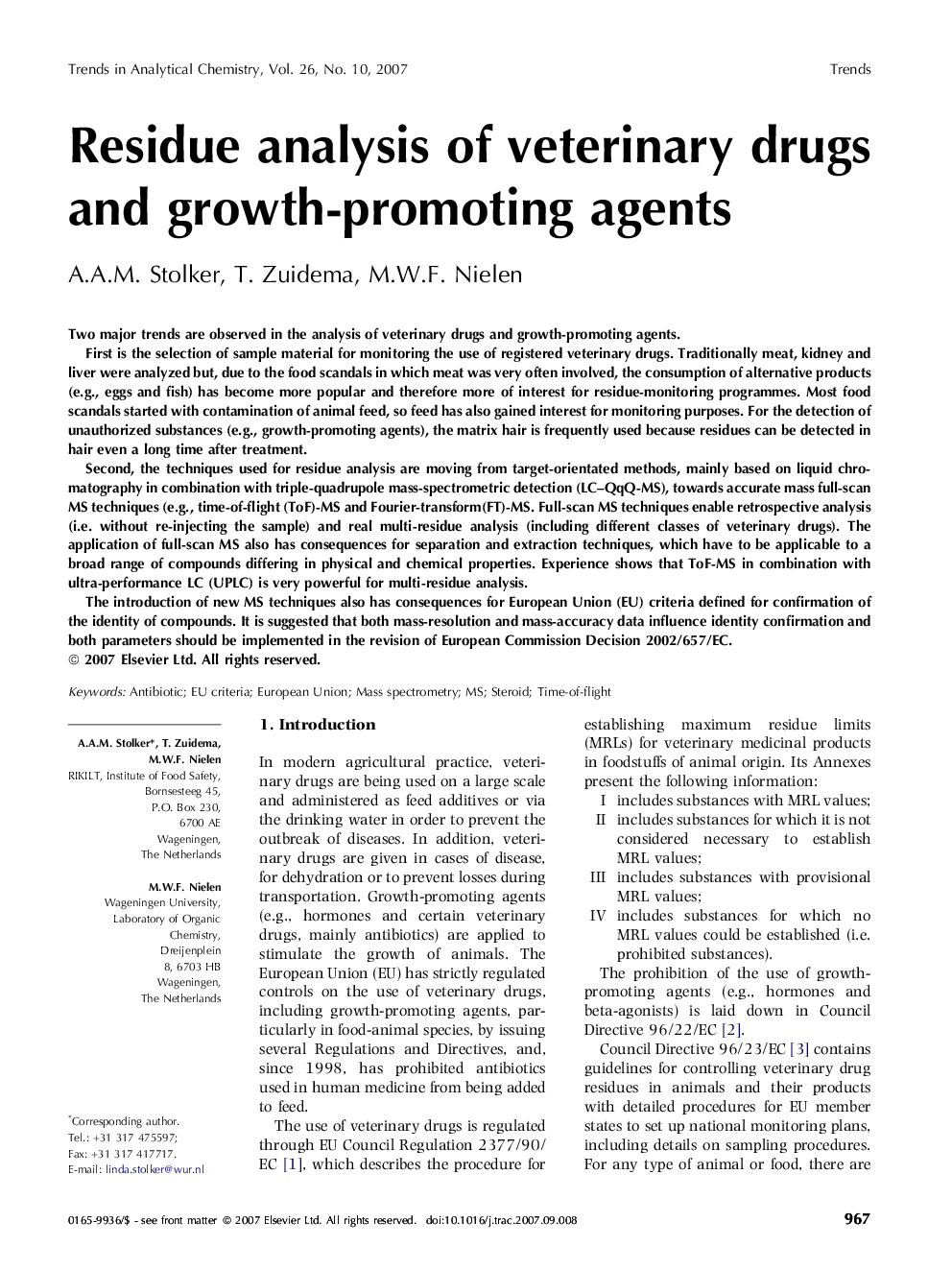| Article ID | Journal | Published Year | Pages | File Type |
|---|---|---|---|---|
| 1248499 | TrAC Trends in Analytical Chemistry | 2007 | 13 Pages |
Two major trends are observed in the analysis of veterinary drugs and growth-promoting agents.First is the selection of sample material for monitoring the use of registered veterinary drugs. Traditionally meat, kidney and liver were analyzed but, due to the food scandals in which meat was very often involved, the consumption of alternative products (e.g., eggs and fish) has become more popular and therefore more of interest for residue-monitoring programmes. Most food scandals started with contamination of animal feed, so feed has also gained interest for monitoring purposes. For the detection of unauthorized substances (e.g., growth-promoting agents), the matrix hair is frequently used because residues can be detected in hair even a long time after treatment.Second, the techniques used for residue analysis are moving from target-orientated methods, mainly based on liquid chromatography in combination with triple-quadrupole mass-spectrometric detection (LC–QqQ-MS), towards accurate mass full-scan MS techniques (e.g., time-of-flight (ToF)-MS and Fourier-transform(FT)-MS. Full-scan MS techniques enable retrospective analysis (i.e. without re-injecting the sample) and real multi-residue analysis (including different classes of veterinary drugs). The application of full-scan MS also has consequences for separation and extraction techniques, which have to be applicable to a broad range of compounds differing in physical and chemical properties. Experience shows that ToF-MS in combination with ultra-performance LC (UPLC) is very powerful for multi-residue analysis.The introduction of new MS techniques also has consequences for European Union (EU) criteria defined for confirmation of the identity of compounds. It is suggested that both mass-resolution and mass-accuracy data influence identity confirmation and both parameters should be implemented in the revision of European Commission Decision 2002/657/EC.
